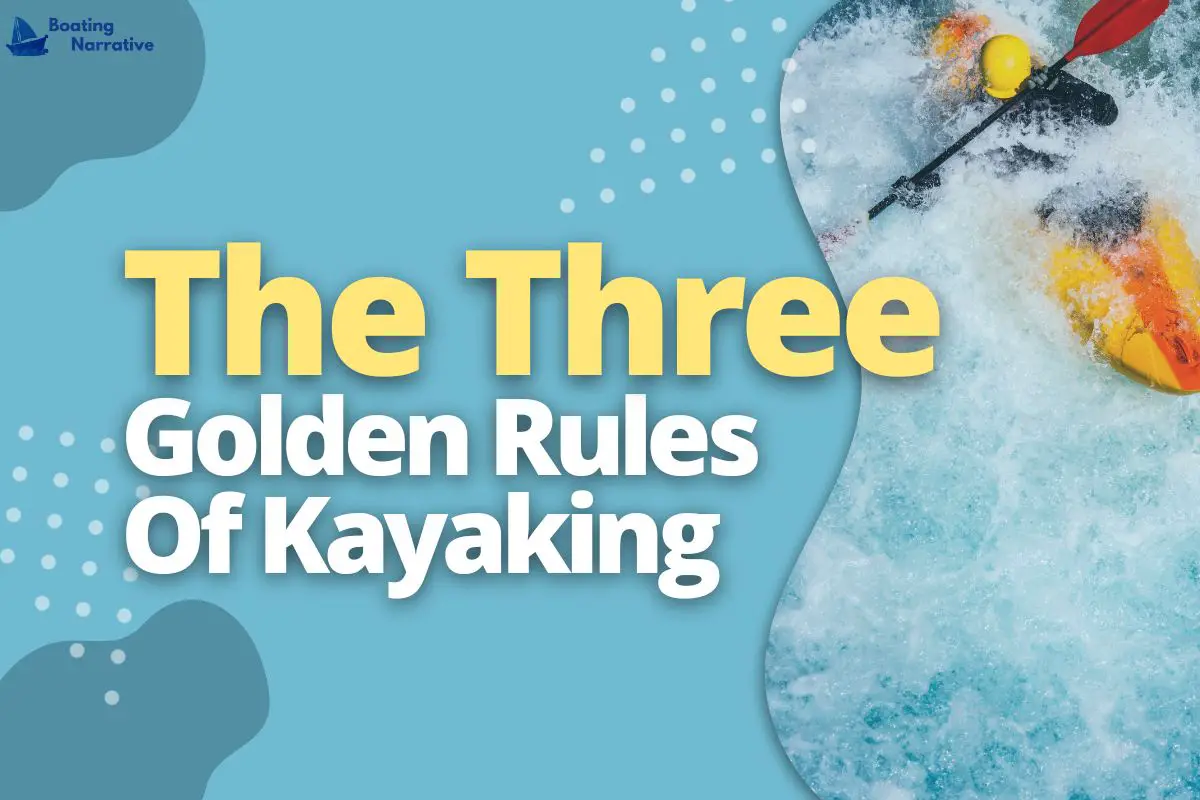There are three golden rules that every kayaker should live by practice safe paddling, know your limits, and respect the water.
Safe paddling means always wearing a life jacket and using proper safety equipment. It also means being aware of your surroundings and knowing what to do in an emergency.
Knowing your limits is essential because it helps you stay safe on the water. Knowing your skill level and choosing routes within your ability is critical.
Respecting the water means respecting the power of the ocean, rivers, and lakes. It means being mindful of the conditions and taking precautions when necessary.
By following these three golden rules, you can ensure a fun and safe kayaking experience.
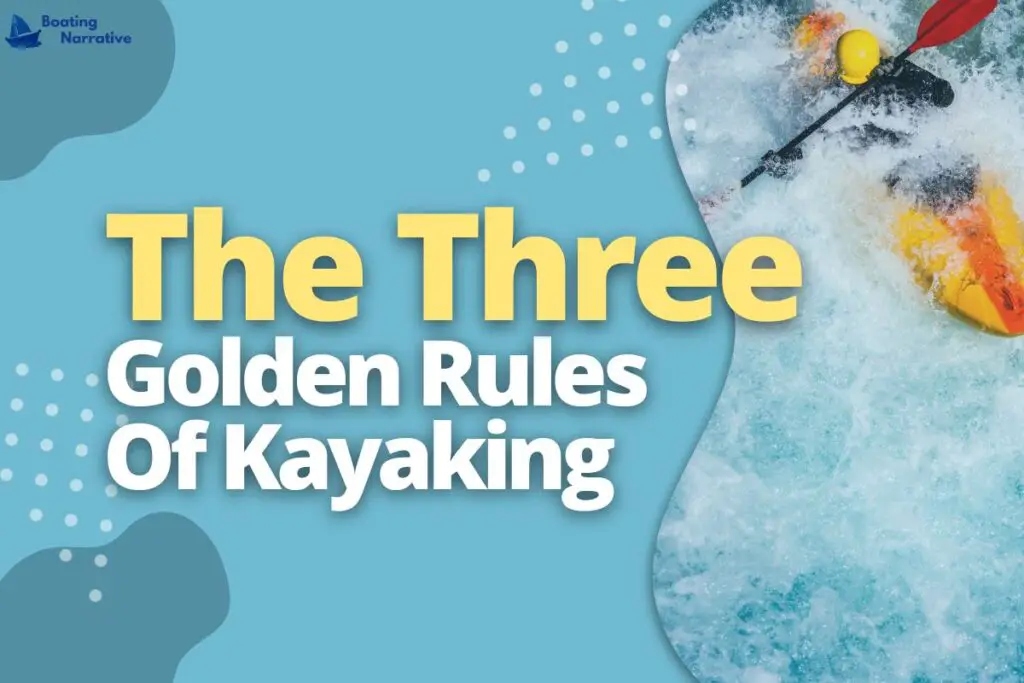
What Are The Three Golden Rules of Kayaking?
Many people love kayaking because it is a great way to enjoy the outdoors while getting some exercise. However, it’s crucial to comprehend the three fundamental principles of kayaking before you get out on the water. And they are:
Safety Is Paramount

The first rule of kayaking is that safety is paramount. Always carry a life jacket, and avoid paddling by yourself. You should also know your surroundings and how to get out of the kayak if it capsizes safely.
Additionally, having the proper safety equipment with you is vital, such as a whistle or flares. Kayaking can be enjoyable and exciting, but it can also be dangerous if you don’t take safety precautions seriously.
Your safety on the water is solely your responsibility, so make sure to have a plan before you set out into the wilderness.
Use Your Torso Strength
The second rule of kayaking is to use your torso strength. This means you should paddle your entire body, not just your arms. Using your torso strength will help you paddle more efficiently and make navigating rough waters easier.
If you can, try to keep the paddle straight with your body and not too far away from you. This will help ensure that each stroke uses your arms and core muscles in full range of motion, rather than just relying on one or two parts of your body.
Don’t lean too far forward or backward when paddling, as this puts unnecessary strain on those areas. You might want to experiment with different positions until you find one that works well to avoid these strains while allowing enough freedom of movement to turn corners easily.
Be Aware Of Your Surroundings
The third rule of kayaking is to be aware of your surroundings. This means being aware of other boats, obstacles in the water, and changing weather conditions.
By being aware of your surroundings, you can avoid dangerous situations and have a more enjoyable experience on the water.
- Stay away from shallow water. When kayaking, this is one of the most crucial guidelines to remember. Kayakers should stay away from shallow water, as it can be very dangerous for them.
- Watch out for rocks, logs, and other obstacles in the water. Rocks, logs, and other obstacles may not be visible at first glance and could cause serious damage to a kayak. This can result in injury or death if no life jackets are on board with you.
- Keep an eye on the weather: You need to know what weather conditions will be present where you intend to go kayaking so that you can prepare accordingly by carrying appropriate clothing and equipment and having a plan B ready if things go south unexpectedly.
Know Your Limits
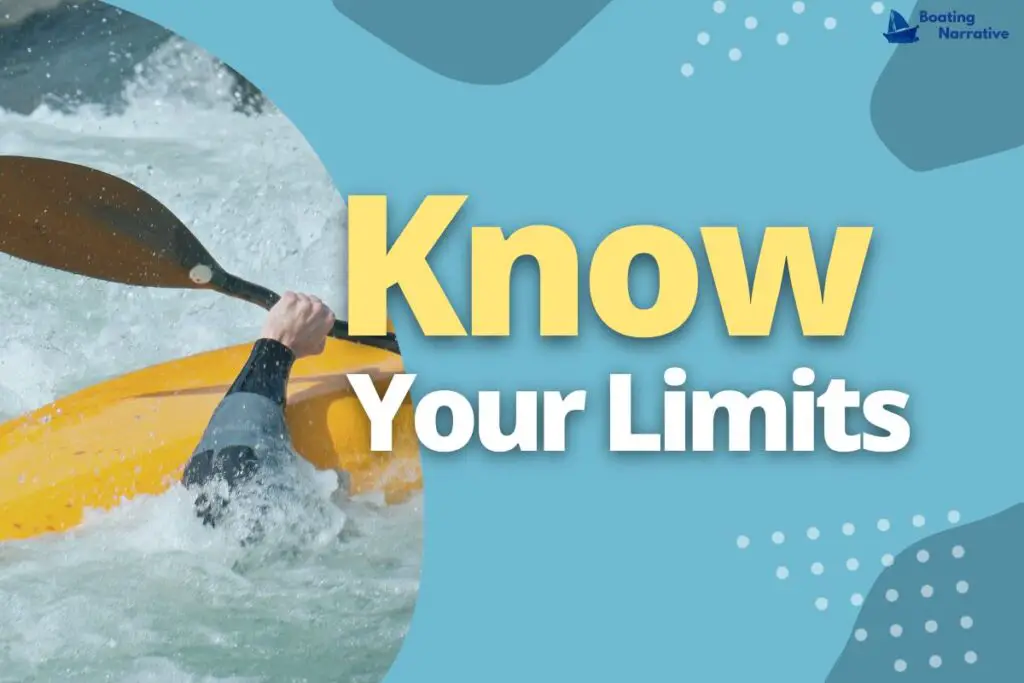
The first golden rule of kayaking is to know your limits. It’s important to be aware of your surroundings and not push yourself too far, especially in water conditions that are more dangerous than what you’re used to.
If you’re an experienced paddler but haven’t explored the area, research before going out on the water. Learn about tides and currents to plan accordingly and ensure that your equipment is adequate for whatever conditions arise.
Wear proper clothing if it’s windy or cold outside; if ocean waves are nearby, wear a life jacket!
Kayaking can be extremely rewarding when done right; keep these three rules in mind as you go out on the open sea with friends or family members (or solo).
Respect The Water
If kayakers are a bit like surfers, the ocean is their wave. That’s not to say that they’re any more likely to get hurt than anyone else who goes near the water.
But paddlers have an especially high risk of injury or death due to their sport’s inherent dangers. Kayaking requires you to handle your craft with expert care while navigating through waves, so you must be careful when out on the water.
But safety precautions aside, there’s also something about exploring nature by way of kayak that makes you feel like a kid again: boundless curiosity, freedom from responsibilities, and excitement for every discovery along the way.
So if you’re going out on your own and want to enjoy these moments without having them ruined by injury or worse,
Understand The Tides And Currents
Understanding tides and currents is a crucial part of kayaking. Tides are ocean water’s rising and falling caused by the moon’s gravitational pull or sun. Currents can either move in one direction (upstream) or against it (downstream).
You’ll need to know what kind of current your kayak will be exposed to during your trip to plan accordingly. For example, if you’re going out on an open ocean where there are no other boats around, you don’t have to worry about a current pulling you into dangerous waters.
However, if another boat nearby might collide with yours while they’re moving through those same waters at high speed—and since there’s nowhere else for them to go—this could cause serious problems for both vessels.
The most important thing here is knowing which way your craft will move based on what time of day it is; if you understand that concept well enough, then everything else falls into place easily enough after that point (so long as there aren’t any large objects nearby).
Have The Proper Equipment.
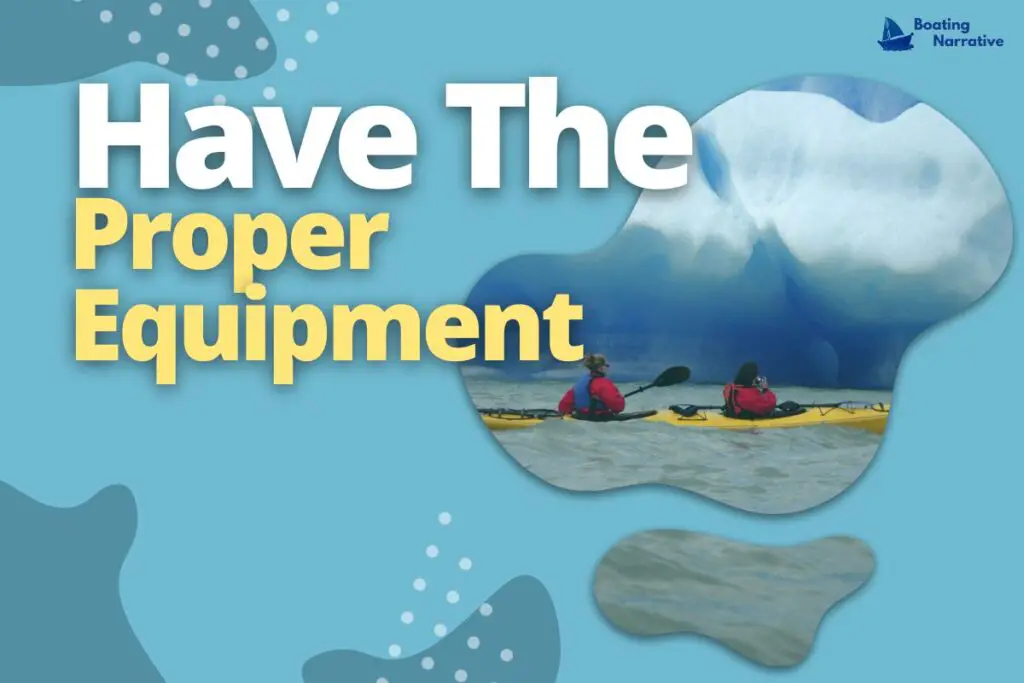
Always use the appropriate gear for the task you’re engaged in. If you are going on a whitewater trip and have no experience, do not use a kayak that is too small or fast for your skill level.
You should also never use a kayak if you do not know how to swim or cannot swim well enough for rough waters.
If all this sounds too complicated, it’s quite simple: make sure you have done what is necessary before using any type of boat or watercraft so that everyone stays safe while having fun.
Stay Hydrated and Energized.
As a kayaker, you should always stay hydrated and energized. Water consumption is the greatest strategy for achieving this before and after your vacation.
You should also ensure you bring a water bottle during your trip. You can fill it with sports drinks or fruit juice if that works for you.
If your weight is a problem during a lengthy travel, then bringing extra food may also be necessary (although it would be better if the food were healthy).
Kayakers spending all day on their vessels need plenty of energy for long days at sea or lakeside wharfside bars.
Dress For Success
If you’re going to kayak, you must know how to dress for success. There’s no point in getting on the water if you can’t paddle properly because your clothing restricts you or doesn’t breathe well.
So what should you wear? Well, this depends on where and when you plan on kayaking. The key things are comfort and safety: make sure whatever clothing items you choose will not restrict movement while paddling, and make sure they won’t get in the way of any safety gear, including your PFD or life jacket.
If it’s warm out with lots of sun, sunglasses are essential, as well as sunscreen (yes, even if it’s cloudy). Don’t forget hats, too—keeping one on hand will protect ears from sunburns and keep them from getting wet when splashing around in waves.
Be Prepared For The Unexpected
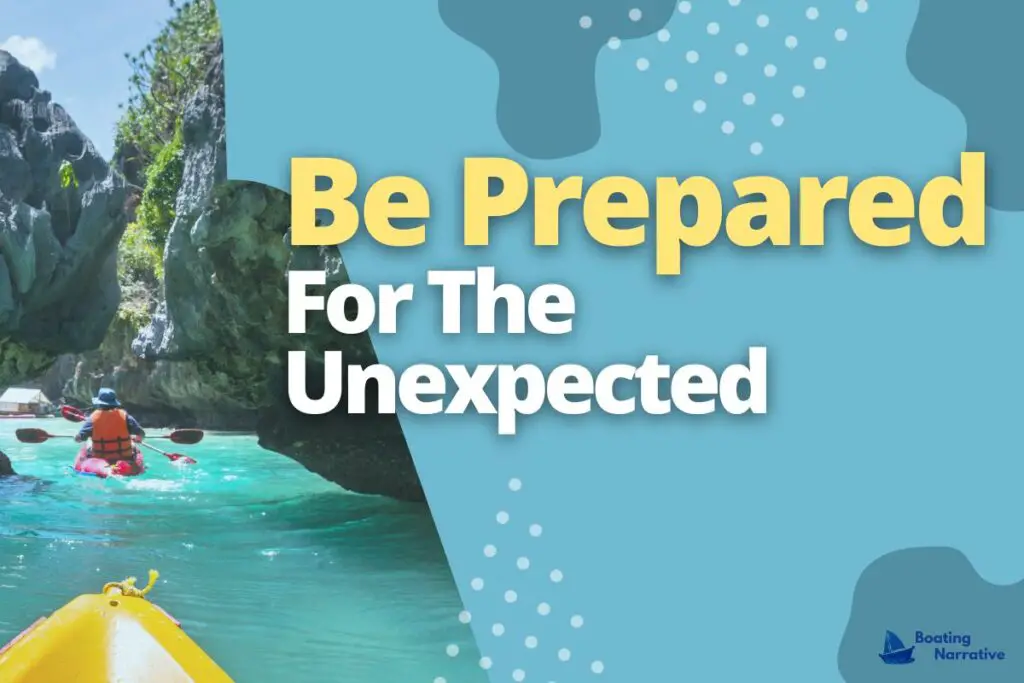
You can never be too ready for unforeseen circumstances. No matter how careful you are, accidents happen, and it’s important to be ready for them. That’s why every kayaker must always have a first aid kit.
So that you always have one available, include this in your pre-trip checklist and keep it in a waterproof container near where you will launch.
If possible, take extra time on the day of your trip to double-check that everything is there before you set out: bandages, antiseptic wipes, gauze pads, scissors (or safety scissors), pain relievers (for adults), antibiotic ointment, and tweezers (for children) are all things that should always be included in a well-stocked first aid kit.
Relax And Have Fun!
It’s crucial to understand that kayaking can be taken seriously. But if you’re taking it too seriously, you miss the point of kayaking entirely.
Kayaking is supposed to be fun! If you aren’t having fun, then what’s the point? Never let someone tell you how much fun kayaking is supposed to be because they think they know better than you (only yourself).
When learning new things like paddling techniques or new places on rivers, there may be more current or rougher water conditions than usual.
Kayakers should always respect their surroundings when traveling through rapids or whitewater sections.
Conclusion
As a beginner, there are three golden rules you should always keep in mind when kayaking: safe practice paddling, be aware of your surroundings and know your limits. Following these simple guidelines can minimize the risks involved in kayaking and have a more enjoyable experience out on the water.
So what are you waiting for? Get out there and start exploring the world from the top of your kayak. Always practice safe paddling, be aware of your surroundings, and know your limits.

